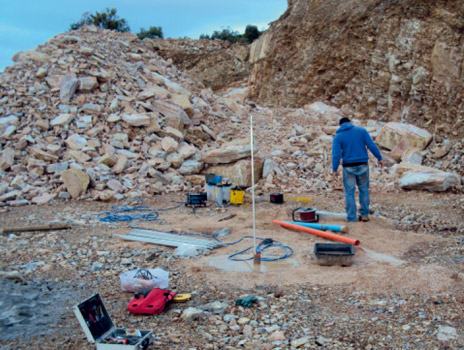So.Ge.T.
Seismic Application
![]()
Seismic Refraction Tomography (SRT)
So.Ge.T. has an extensive experience in conducting seismic investigations, in a variety of environmental conditions. The SRT method, widely used due to its versatility, is by far the most important geophysical technique in every engineering project. The processing of the seismic data with the Tomography approach, which is solved through an inverse problem, produces a section of the underground that describes the seismic waves propagation velocity, and hence the seismic layers present. It provides:
- Dynamic elastic modulus with high accuracy, resolution and penetration.
- Detailed information on the distribution and thicknesses of subsurface layers, which have density contrasts and characteristic seismic velocities.
- The details level and the resolution achieved with the Refraction Tomography is much higher than those obtained with the simpler and older General Reciprocal Method (GRM).
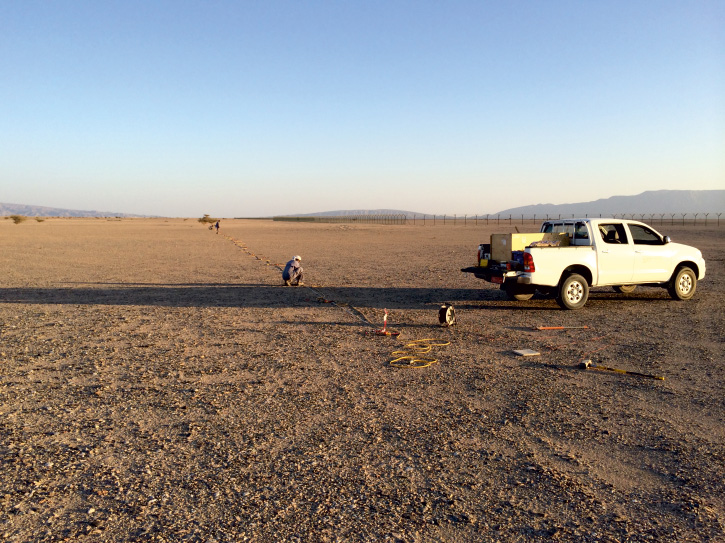
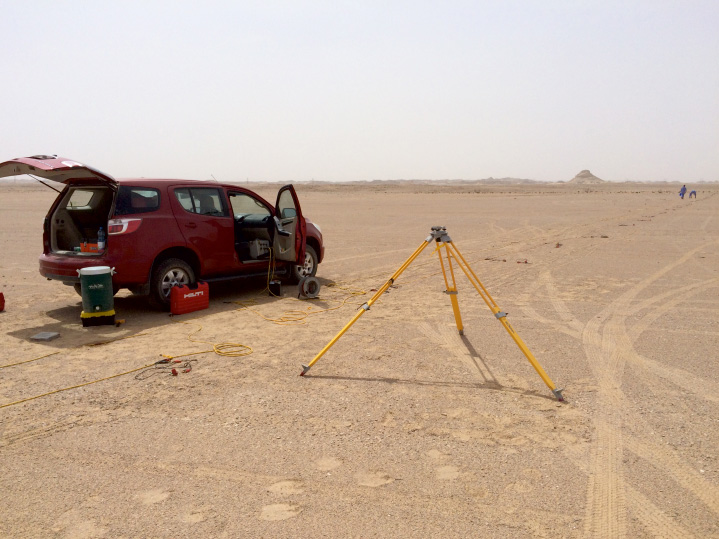
Down-Hole, Cross-Hole
The aim of the seismic down-hole and cross-hole tests, is to determine the propagation velocity of body waves (both P and SH, compressional and shear waves), in the medium surrounding the borehole.
While the down-hole requires only one hole, in which the sensors are lowered, and a source on the surface, the cross-hole method, more complex, requires at least three holes and both the source and the receivers are inserted in the holes.
The ultimate goal of both tests is to derive elastic rock properties such as Poissons ratio or YOUNG modulus and to estimate the soil stiffness and load-bearing capacity. Being more expensive than the surface methods (such as MASW and SRT), on account of the need of preparing cased boreholes, and at the same time much more precise, these methods are selected only when the information must be more detailed and reliable or to fine tuning and calibrate the surface methods.
MASW and ReMi
The ReMi and MASW are two seismic surface waves methods that use ambient noise (ReMi) and surface waves (MASW) to generate a detailed vertical shear waves velocity profile. They represent, unlike borehole methods, a non-invasive way of obtaining a sample of a greater and more representative volume of material, averaged over the length of the seismic array. The ReMi and MASW methods are capable of detecting thin layers and velocity inversions, and, as such, are highly reliable and commonly used to measure Vs30 for ground motion determinations. Because it thrives in noisy environments, the ReMi method is ideal for shear wave profiling in urban environments where seismic refraction is precluded because of large amounts of ambient noise.The MASW, instead, measures surface waves generated from various types of seismic sources (such as a sledge hammer), analyses the propagation velocities of those surface waves and then deduces shear-wave velocity variations below the surveyed area. Both techniques require laying down a cable and a set of geophones.
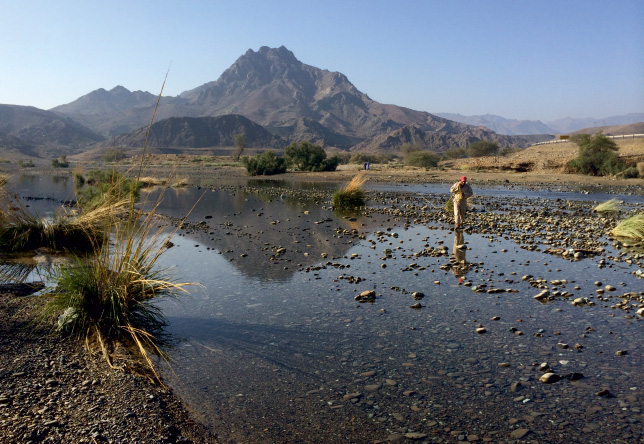
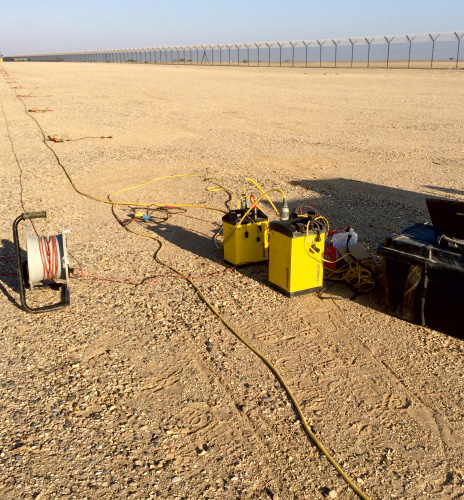
Microtremor and Nakamura (H/V)
The study of microtremors provides useful information on dynamic properties of the site such as predominant period and amplitude. Microtremor observations are moreover easy to perform, inexpensive and can be applied to places with low seismicity. Finally, the microtremor measurements are usually adopted as the primary method for the seismic microzonation. The Nakamura technique, also known as horizontal-to-vertical spectral ratio (HN or HVSR), does not require excavations and is convenient and inexpensive. The natural site period and amplification factor are estimated easily, making this method attractive and applicable in areas of low or even no seismicity.
Equipment available
- Four DMT summit compact® for a total of 96 contemporary channels;
- Six channels down-hole instrument (made of two tri-axial geophones lm spaced);
- 4.5Hz geophones for P and SH waves;
- Peg-40, automatic seismic energizer, equipped with 40Kg accelerated weight;
- 10 Kg hammer for manual energization;
- Aluminium plate with 300Kg weight for lateral SH energization;
- Micromed TROMINO® for passive seismic and monitoring;
Common Application
- Seismic characterization of the foundation soil, Vs30;
- Detection and mapping of the bedrock depth and stratigraphic profile;
- Identification and mapping of fractures zones;
- Lithologic identification, such as sand and gravel deposits, rock, and so on;
- Properties of soil and rock;
- Determination of the sliding plane;
- Landslide study;
- Assessment of subsurface structures;
- Seismic microzonation
